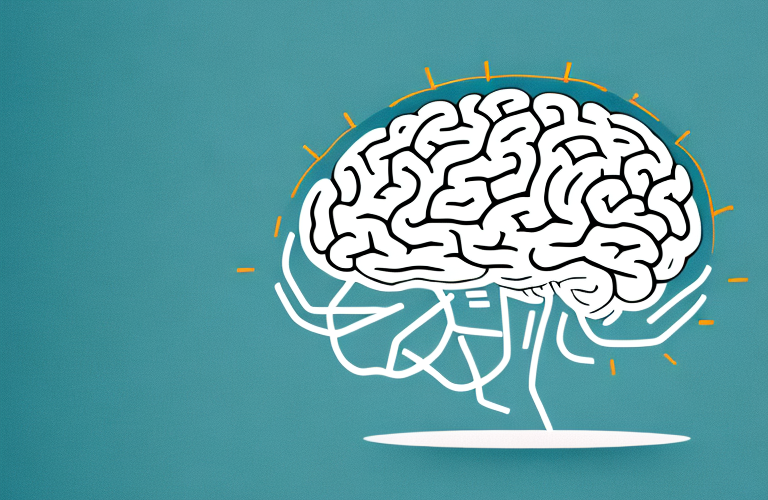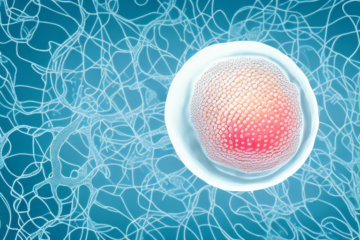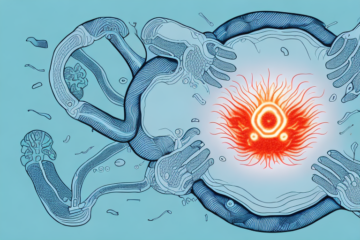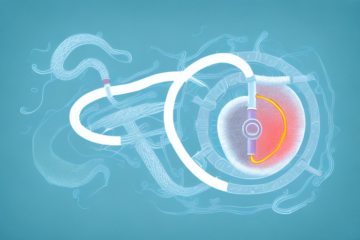Generalized Anxiety Disorder, commonly known as GAD, is a mental health condition characterized by excessive and persistent worrying about everyday things. It is a prevalent condition affecting millions of people worldwide, with women being twice as likely to be diagnosed with GAD compared to men. In this article, we will explore what GAD is, its causes and risk factors, signs and symptoms, diagnosis, treatment options, coping strategies, and more.
What is Generalized Anxiety Disorder?
GAD is a mental health condition that involves persistent and excessive worrying about everyday things, even when there is little or no reason to worry. People with GAD may have trouble controlling their worries, which can interfere with their daily activities, relationships, and overall quality of life. Worries may be related to work, school, family, health, finances, or other issues.
Generalized Anxiety Disorder affects approximately 6.8 million adults in the United States, making it one of the most common mental health disorders. It can develop at any age, but it often begins in childhood or adolescence and can persist into adulthood. Women are twice as likely as men to be diagnosed with GAD.
While the exact cause of GAD is unknown, it is believed to be a combination of genetic, environmental, and psychological factors. Some studies suggest that people with GAD may have an imbalance of certain chemicals in the brain, such as serotonin and dopamine. Treatment for GAD may include therapy, medication, or a combination of both.
Causes and Risk Factors of Generalized Anxiety Disorder
The exact causes of GAD are not known, but it is believed to be a combination of genetic, neurological, and environmental factors. People with a family history of anxiety disorders are more likely to develop GAD. Some studies suggest that GAD may be related to imbalances in certain brain chemicals called neurotransmitters, such as serotonin and norepinephrine. Environmental factors, such as trauma, stressful life events, or chronic stress, can also contribute to the development of GAD.
In addition, certain risk factors may increase the likelihood of developing GAD, such as being female, having a history of anxiety or other mental health conditions, having a chronic medical condition, or excessive use of caffeine or other stimulants.
Another potential risk factor for GAD is a lack of social support. People who lack a strong support system of family and friends may be more vulnerable to developing anxiety disorders, including GAD. This is because social support can help individuals cope with stress and provide a sense of security and comfort.
Furthermore, research has shown that certain personality traits may also increase the risk of developing GAD. For example, individuals who are perfectionists, have low self-esteem, or are prone to negative thinking may be more likely to experience symptoms of GAD. These personality traits can contribute to feelings of worry, fear, and anxiety, which can exacerbate symptoms of GAD.
Signs and Symptoms of Generalized Anxiety Disorder
The most common signs and symptoms of GAD include:
- Excessive and persistent worries about everyday things
- Difficulty controlling worries
- Restlessness or feeling on edge
- Fatigue
- Irritability
- Muscle tension
- Trouble sleeping
- Difficulty concentrating
These symptoms must be present for at least six months to be diagnosed with GAD.
Aside from the common symptoms, individuals with GAD may also experience physical symptoms such as sweating, trembling, and nausea. These symptoms can be triggered by certain situations or events, and can cause significant distress and impairment in daily functioning.
It is important to note that GAD can co-occur with other mental health disorders such as depression, substance abuse, and other anxiety disorders. Seeking professional help from a mental health provider can help individuals receive an accurate diagnosis and appropriate treatment for their symptoms.
Diagnosis of Generalized Anxiety Disorder
To diagnose GAD, a mental health professional will ask about symptoms, medical history, and medications. They may also perform a physical exam or order some tests to rule out other medical conditions that may cause anxiety symptoms. The Diagnostic and Statistical Manual of Mental Disorders (DSM-5) provides diagnostic criteria for GAD.
One of the key symptoms of GAD is excessive worry and anxiety about a variety of everyday situations and events. This worry is often difficult to control and can interfere with daily activities and relationships. Other symptoms may include restlessness, fatigue, difficulty concentrating, irritability, muscle tension, and sleep disturbances.
Treatment for GAD may include therapy, medication, or a combination of both. Cognitive-behavioral therapy (CBT) is a common form of therapy used to treat GAD, which focuses on changing negative thought patterns and behaviors. Medications such as antidepressants and anti-anxiety drugs may also be prescribed to help manage symptoms. It is important to work with a mental health professional to determine the best treatment plan for each individual.
Treatment Options for Generalized Anxiety Disorder
Treatment for GAD typically involves a combination of psychotherapy, medication, and lifestyle changes. The goal of treatment is to reduce symptoms, improve daily functioning, and enhance quality of life.
Cognitive Behavioral Therapy (CBT) for Generalized Anxiety Disorder
CBT is an evidence-based therapy that focuses on changing negative patterns of thoughts and behaviors that contribute to anxiety. CBT for GAD usually involves weekly sessions with a trained therapist for several months. The therapist will teach you skills to manage worrying, such as identifying and challenging negative thoughts, relaxation techniques, and problem-solving strategies.
Medications for Generalized Anxiety Disorder
Medications may be prescribed to reduce symptoms of GAD, such as anxiety, depression, or insomnia. The most common medications for GAD are selective serotonin reuptake inhibitors (SSRIs), such as fluoxetine and sertraline, and benzodiazepines, such as lorazepam and diazepam. Medications must be prescribed by a healthcare professional and should be monitored for side effects and efficacy.
Alternative Treatment Options for Generalized Anxiety Disorder
Some people with GAD may find relief from alternative therapies, such as acupuncture, mindfulness, or herbal supplements. However, these therapies have not been thoroughly studied for their effectiveness in treating GAD and should only be used under the guidance of a trained healthcare professional.
Lifestyle Changes to Manage Generalized Anxiety Disorder
Lifestyle changes can also help manage symptoms of GAD, such as practicing regular exercise, getting enough sleep, eating a balanced diet, and avoiding caffeine or other stimulants. These changes can also improve overall health and well-being.
Group Therapy for Generalized Anxiety Disorder
Group therapy is another option for treating GAD. In group therapy, you will meet with a therapist and other people who also have GAD. The therapist will guide the group in learning coping skills and strategies to manage anxiety. Group therapy can provide a supportive environment and help you feel less alone in your struggles.
Mind-Body Therapies for Generalized Anxiety Disorder
Mind-body therapies, such as yoga, meditation, and tai chi, can also be helpful in managing symptoms of GAD. These therapies focus on the connection between the mind and body and can help reduce stress and anxiety. They can also improve overall physical health and well-being.
Coping Strategies for Living with Generalized Anxiety Disorder
Living with GAD can be challenging, but there are ways to effectively manage symptoms and improve quality of life. Some coping strategies include:
- Practicing relaxation techniques, such as deep breathing, yoga, or meditation
- Managing stress, such as setting realistic goals, prioritizing tasks, and avoiding overcommitment
- Maintaining a social support network, such as family, friends, or support groups
- Engaging in pleasurable activities, such as hobbies, sports, or arts
Another effective coping strategy for GAD is cognitive-behavioral therapy (CBT), which involves identifying and changing negative thought patterns and behaviors that contribute to anxiety. This type of therapy can be done individually or in a group setting with a trained therapist.
In addition, making lifestyle changes such as getting regular exercise, eating a healthy diet, and getting enough sleep can also help manage symptoms of GAD. It’s important to work with a healthcare professional to develop a personalized treatment plan that works best for you.
Support Groups and Resources for Individuals with Generalized Anxiety Disorder
Support groups and resources can provide valuable information, emotional support, and coping strategies for individuals with GAD and their families. Some resources include:
- Anxiety and Depression Association of America: https://adaa.org/
- National Alliance on Mental Illness: https://www.nami.org/
- Mental Health America: https://www.mhanational.org/
- Local support groups or mental health clinics
It is important to note that not all support groups and resources are created equal. It may take some time to find the right fit for you and your needs. Some support groups may focus on specific aspects of GAD, such as social anxiety or panic attacks, while others may be more general. It is also important to consider the qualifications and experience of the facilitators or therapists leading the group.
In addition to support groups and resources, individuals with GAD may benefit from therapy, medication, and lifestyle changes such as exercise and stress management techniques. It is important to work with a healthcare professional to develop a comprehensive treatment plan that addresses your unique needs and goals.
Prognosis and Outlook for Individuals with Generalized Anxiety Disorder
With proper treatment and management, most people with GAD can improve their symptoms and achieve a better quality of life. However, GAD is a chronic condition that can fluctuate in severity over time, so it is important to continue treatment and follow-up with healthcare professionals.
It is important to note that the effectiveness of treatment can vary from person to person. Some individuals may experience significant improvement with medication and therapy, while others may require a combination of different treatments or a longer period of time to see results.
In addition, lifestyle changes such as regular exercise, healthy eating habits, and stress-reducing activities like meditation or yoga can also be beneficial in managing symptoms of GAD. It is important for individuals with GAD to work closely with their healthcare team to develop a comprehensive treatment plan that addresses their unique needs and goals.
How to Help a Loved One with Generalized Anxiety Disorder
If you have a loved one with GAD, there are ways to provide support and help them manage symptoms, such as:
- Providing emotional support and understanding
- Encouraging them to seek professional help
- Assisting with practical tasks, such as transportation or appointments
- Learning about GAD and how to effectively communicate with your loved one
It is important to remember that supporting a loved one with GAD can be challenging and may require patience and understanding. It is also important to take care of your own mental health and seek support if needed. Additionally, practicing self-care and stress-management techniques can help both you and your loved one cope with the challenges of GAD.
Understanding the Relationship Between Stress and GAD
Stress can be a trigger for GAD and can worsen symptoms. Understanding and managing stress is an essential part of managing GAD. Some ways to manage stress include:
- Identifying sources of stress and making lifestyle changes to reduce them
- Practicing stress-reducing techniques, such as meditation or exercise
- Setting realistic goals and learning to prioritize tasks
- Seeking professional help if stress becomes overwhelming
In conclusion, GAD is a prevalent mental health condition that can have a significant impact on daily life. However, with proper diagnosis and treatment, most people with GAD can achieve a better quality of life. It is important to seek professional help if you or a loved one is experiencing symptoms of GAD. With a combination of psychotherapy, medication, lifestyle changes, and support, individuals with GAD can learn to manage symptoms and lead fulfilling lives.
It is important to note that not all stress is bad. In fact, some stress can be beneficial and motivate individuals to take action. However, chronic stress that is not managed properly can lead to negative health outcomes, including the development or worsening of GAD.
Additionally, it is important to address any underlying issues that may be contributing to stress and anxiety. This may include unresolved trauma, relationship problems, or financial stress. By addressing these issues, individuals with GAD can reduce their overall stress levels and improve their mental health.










